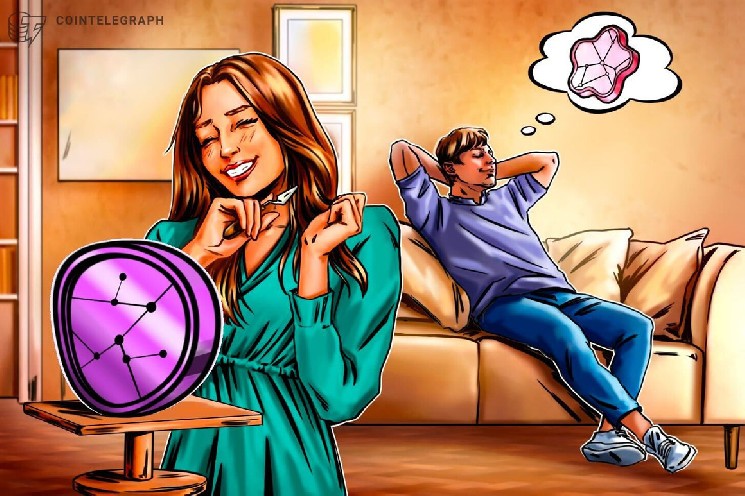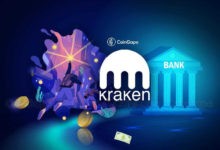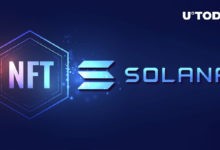Critics can’t stop NFTs from becoming a mainstay of daily life

Some critics deem nonfungible tokens (NFTs) to be totally worthless. They don’t see the point. Why should they? The industry hasn’t covered itself in glory with countless rug pulls and celebrity endorsements with prompt pump-and-dumps.
But, this is missing the point. Already most of the digital and physical objects we use in real life are unique, they are not fungible: this means they cannot be copied, substituted or subdivided.
Detractors might still say, well, what’s the point? NFTs are immutable and verifiable assets on the blockchain — these sound like industry buzzwords with little meaning. However, they go a long way in exposing the untold use cases.
Contrarians exist in every phase of technological innovation; You can go back to the literal Luddites of 19th century England who destroyed machinery threatening their jobs, or more presciently, you can point to those who thought the internet was going to be a short-lived craze.
We are ever-closer to digitizing swathes of our lives, and not in a metaverse-owns-you-now type of way, but instead through the tokenization of assets with transfer made easier than ever.
It’s true in a world of crypto mass adoption, like with the internet, users will likely hold little knowledge of the technology underpinning the system. NFTs may well be used abundantly in this scenario: Users simply won’t care about past negative connotations when they can access a brilliant new way of owning, renting and selling.
Near-negligible transaction fees is the goal, as is an easily navigable user interface. Right now, there isn’t the groundbreaking solution needed to break down barriers and remove existing stigmas.
NFTs can irrevocably alter the way we exchange value. Here lies an opportunity to digitize assets in an open economy and in the process, hasten a step toward legitimacy for blockchain solutions in the mainstream market.
Leveraging the power of NFTs
First mover’s advantage in the burgeoning tech world is not to be underestimated.
But, leading players in the NFT space have garnered the wrong type of mainstream attention and there is a perception problem. Cynical corners of the media tend to cast a skeptical eye over blockchain-related projects and paint the space as riddled with rug pulls and abandoned road maps. This is a view that sorely lacks nuance and understanding; do they realize how many people lost money in the dot-com bubble?
What is often overlooked — and this will come with the maturation of the technology — is how NFTs can change marketplaces: in gaming, as well as in all conceivable intellectual property as we know it. Mainstream success for NFT solutions will result from the utility for commercial and retail users, and it is not, therefore, likely to be so intrinsically tied to volatile crypto markets.
NFTs just have too many use cases to not become incredibly useful. Bored Apes started with profile pictures, but its purveyor, Yuga Labs, is already building off the springboard of the huge community it gained from its notoriety with plans for a metaverse and gaming platform.
This dramatic pivot from Yuga Labs indicates NFTs carry a much greater purpose than just art and collectibles and hints at a viable path to mass adoption.
NFTs just fulfill functions much better than existing systems, which will manifest across industry and consumer markets once efficient and effective solutions are created.
What makes an adoptable NFT?
The pillars of a successful NFT project are currently predicated on three major aspects: a strong community, exclusivity and utility.
You need people to talk about the NFTs in a positive light and share information to one another. A tangible sense of exclusivity is present in the most popular projects and this should extend to the implementation of NFTs in any media form. If one million other people have the same skin as you in a game, you won’t really see it being worth keeping.
The utility provides real-world value to buying and holding an NFT. If a consumer buys a brand new car, they know exactly what to expect, more or less. Of course, in the case of an NFT, you want it to look good in most cases, but to pique mainstream interest, there must be an element of it serving a grander objective.
Indeed, an oft-neglected viewpoint is how the utility of NFTs can unlock mainstream success. Digital assets represented by NFTs hold untapped potential to revolutionize both products and services. Your money is safe when the asset is not liable to drastic changes in value because it serves a purpose, again, in the real world.
A notable shift and evolution in NFTs beyond how we perceive them in the present day is a prerequisite for this next step. The industry is slowly moving toward the ‘normalization’ of nonfungible tokens wherein value is established and use cases are realized.
One great example of this is in secondary ticket markets, which could allow people to trade verifiable NFT passes to a show, sports game or concert through a smart contract. The blockchain, in this case, knows the ticket is legitimate because that’s the nature of the technology: Information cannot be changed once registered in a transaction.
On-chain tickets are an obvious use case. From a consumer perspective, there is potential to safely buy tickets on the resale market for any event. Blockchain provides proof of purchase from the original ticket vendor, as well as a price history and further makes transfer very simple with the smart contract only releasing the ticket upon the confirmation of funds reaching the seller’s wallet.
Processes could be made much fairer for those using the secondary market and simultaneously nullify the efforts of scalpers: If price increases were limited to 50% additional to face value, with the artist receiving royalties for the resale, in one fell swoop, we deal with the issue of performers struggling to capitalize on their success and the problem of people being ripped off.
Retail bosses may imagine a world where all products are uniquely registered in the digital world; do they know yet these could be represented by NFTs?
Rights to a rented home is another interesting possibility. Upon purchasing the NFT, which gives you the right to use the property for a period of time, what if you can upload images to the blockchain showing the condition of the house you are leasing? A legal challenge over the landlord keeping a security deposit can be swiftly dismissed or indeed proven when such matters are immutably proven with the aid of blockchain.
We haven’t even scratched the surface of business utility for NFTs. There is pervasive fraud in supply chains with countless incidents of double financing, where malicious actors use copies of the same paperwork to illegally obtain money from multiple sources. With blockchain, this will disappear overnight as each and every shipment can be represented by only one single NFT that documents everything delivered — and, indeed, tracks it every step of the way.
More than just assets
The winning combo of blockchain verification and self-custody can empower consumers and make their online lives far more secure than is currently possible.
A passport could be stored on a mobile device and locked behind multi-factor authentication: the entire process of renewing this crucial travel document can be made much quicker when there is a totally digital solution. Represented as an NFT, it further becomes harder to create a forgery which reduces the burden of security on governing authorities.
Medical records are another use case that could revolutionize the often antiquated systems in existence across hospitals around the world. Collating information in a secure manner is not an easy process nor is sharing this data with other entities, which, in some cases, can be an urgent matter. NFTs solve this issue as, even failing the computer sharing processes in place, the individual may gain the ability to access and share their own records.
We are swiftly moving toward a world where individuals take control of their information and choose who they share it with. Furthermore, digital assets will belong solely to them without the need to rely on centralized bodies to store and allow transfers to be made.
Challenges remain
Blockchains still have the technical limitations of throughput, scalability and congestion. There isn’t a single chain in existence that could onboard half a billion users, but we are steadily approaching the day when this becomes a reality.
Instead of listening to the noise of those who dare not try to understand the technology, we should be focused on collectively delivering better outcomes with a view to bringing an entirely novel way of doing things across all industries.
Yet, much development lies ahead. The mainstream media and critics will not destigmatize NFTs on their own. The use of blockchain in this manner doesn’t fit into their worldview.
When mass adoption eventually arrives, and I believe this is only a matter of time, we will swiftly enter into a new digital age built upon the blockchain. People will scarcely know what makes their seamless transfer of digital assets and information possible. But, they will use it and NFTs will vastly improve the way they conduct their lives in both digital spaces and through real-world applications. This is certainly a future worth fighting for through all and any disparaging noise.
Rong Kai Wong is the chief operating officer at Parsiq. He served as head of operations in a Singaporean police division of more than 700 police officers before joining Binance as director of Binance X, the digital asset exchange’s $100 million BSC Accelerator Fund.
This article is for general information purposes and is not intended to be and should not be taken as legal or investment advice. The views, thoughts, and opinions expressed here are the author’s alone and do not necessarily reflect or represent the views and opinions of Cointelegraph.






 Bitcoin
Bitcoin  Ethereum
Ethereum  Tether
Tether  USDC
USDC  TRON
TRON  Dogecoin
Dogecoin  Cardano
Cardano  Chainlink
Chainlink  Bitcoin Cash
Bitcoin Cash  LEO Token
LEO Token  Stellar
Stellar  Hedera
Hedera  Zcash
Zcash  Litecoin
Litecoin  Monero
Monero  Dai
Dai  Cronos
Cronos  OKB
OKB  Ethereum Classic
Ethereum Classic  Tether Gold
Tether Gold  KuCoin
KuCoin  Dash
Dash  Algorand
Algorand  Gate
Gate  VeChain
VeChain  Cosmos Hub
Cosmos Hub  Stacks
Stacks  Decred
Decred  Tezos
Tezos  IOTA
IOTA  TrueUSD
TrueUSD  Theta Network
Theta Network  NEO
NEO  Basic Attention
Basic Attention  Synthetix
Synthetix  Qtum
Qtum  DigiByte
DigiByte  0x Protocol
0x Protocol  Ravencoin
Ravencoin  Zilliqa
Zilliqa  Nano
Nano  Holo
Holo  Siacoin
Siacoin  Numeraire
Numeraire  Ontology
Ontology  Enjin Coin
Enjin Coin  Waves
Waves  Status
Status  Pax Dollar
Pax Dollar  BUSD
BUSD  Hive
Hive  Steem
Steem  Lisk
Lisk  Huobi
Huobi  OMG Network
OMG Network  Bitcoin Gold
Bitcoin Gold  Augur
Augur  NEM
NEM  Ren
Ren